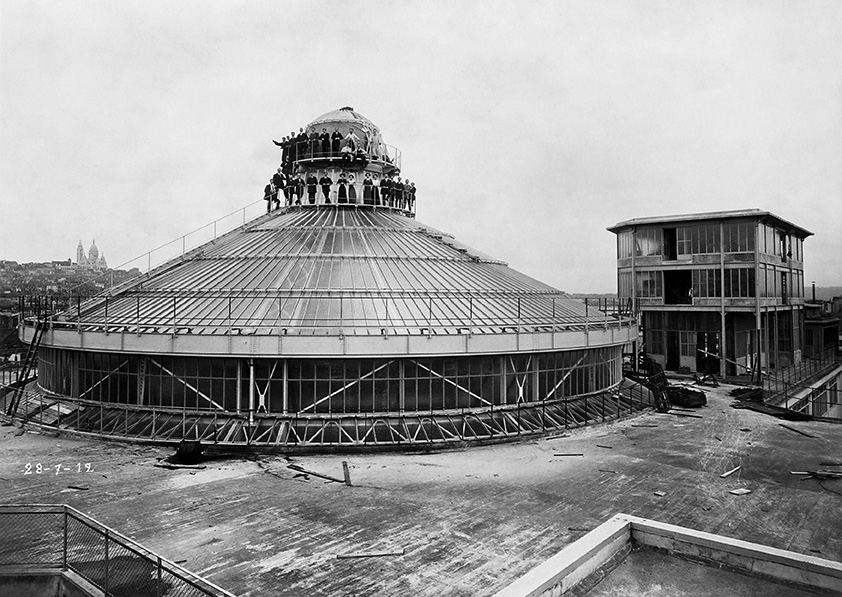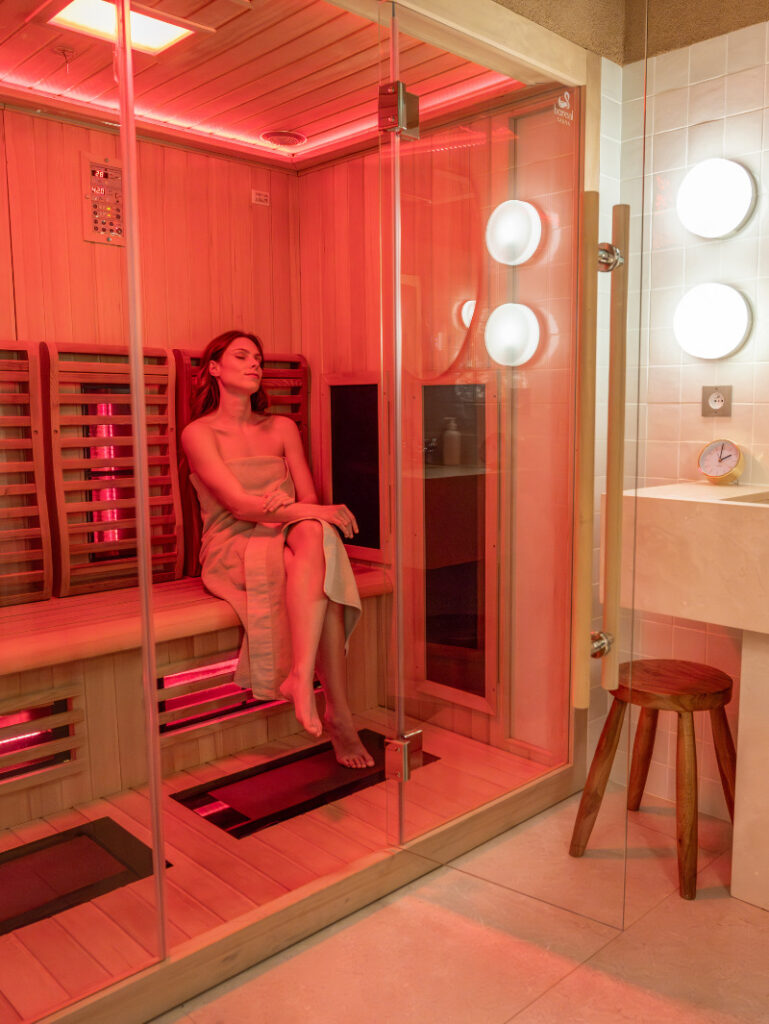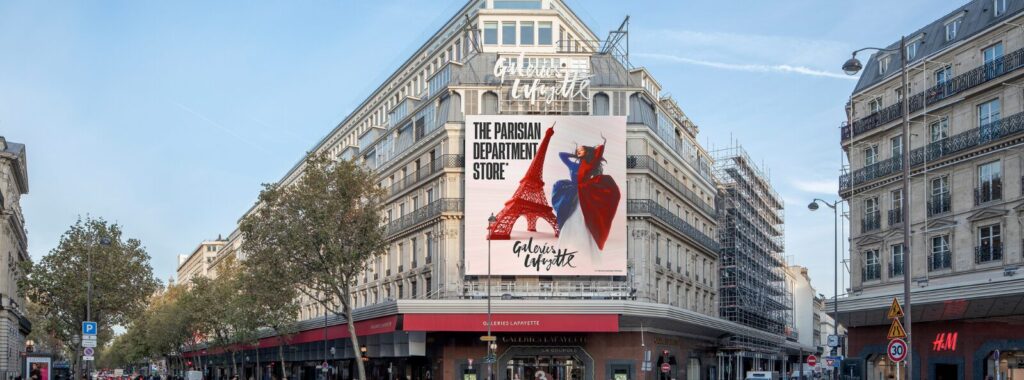If you’re interested in the history of France and Paris, you’ll find several examples of Haussmannian architecture in Paris, particularly at Galeries Lafayette and its infamous dome. The iconic Parisian department store represents this epoch and combines architectural history with luxury retailing.

The store’s story begins in the 19th century, when Paris changed from a dark, dirty city to a landscape of tree-lined boulevards and smart building façades. The breath-taking dome was designed with stained glass to enhance the merchandise and allow the light and colors to reflect on the grand staircase and stores below.
Good to know 📝
Find out more about the Galeries Lafayette Dome and the history of the building on a Guided Heritage Tour.
Haussmannian Architecture: Parisian elegance uncovered
The uniform style and sense of grandeur characterize Hausssmann’s architecture. Where once Paris was dark, dirty, and overcrowded, Haussmann changed the layout and look of the city.
Under Napoleon III’s reign, in 1853 Haussmann began to redesign the layout of Paris, introducing the wide boulevards and tree-lined streets it’s famous for today. The hallmark features of Haussmannian buildings include wrought iron balconies, tall windows, and ornate cornices, blending classical and modern architecture.
The influence of Haussmann architecture also extends outside Paris, for example, the Château de Versailles, which you can visit on a day trip from Paris.
Napoleon III’s influence
Napoleon III wanted to modernize the city to make more room on the crowded streets, and improve public health, as it was rife with disease at that time. With Haussmann as his chief urban planner, Napoleon III transformed Paris into a modern metropolis.
The parks, wide streets, and public squares travelers to Paris visit today are a result of Haussmann’s renovation of Paris. The planning took place above and below ground, with a water system and sewer network being installed under the floor of the city.
The history of the Haussmannian architecture style
The transformation of Paris
Georges-Eugène Haussmann’s architecture transformed Paris from a maze of dark, narrow streets and dark buildings into a structured and airy space filled with greenery. An intriguing sight for visitors to France (and a great photo opportunity) are the apartments, with their sophisticated facades and eloquent architecture.
If you’re on a sightseeing tour of the history of Paris just look up to see the wonderful Hausmann buildings that gracefully tower above the streets.
Good to know 📝
For a unique view of Paris visit the Galeries Lafayette rooftop terrace. This offers another angle to see the refined Haussman style.
Haussmann’s renovation plans
Haussmann’s plans covered the entire city, but his focus on key areas such as the Opera House and the Champs-Élysées (where there is another Galeries Lafayette store) are fine examples of his vision for Paris. These became the focal points of Parisian social life and cultural activities and are today some of the top sights for visitors to Paris.
Rebuilding the city’s infrastructure
Haussmann’s ambitious task involved not only architectural innovation but also the modernization of Paris’s infrastructure. The construction of sewage systems, gas lighting, and public parks transformed Paris into a model city.
Creation of the wide boulevards
The creation of wide boulevards and level floors such as Boulevard Haussmann (location of the main Galeries Lafayette store) and Boulevard Saint–Germain allowed the traffic to flow and pedestrians to walk safely. The Parisian Boulevards symbolize the city’s elegance and sophistication and attract visitors from all over the world.
The importance of Place de l’Opéra

Place de l’Opéra is a symbol of Haussmann’s architecture, where the majestic Opéra Garnier is surrounded by Haussmannian buildings. This area was formerly full of run-down buildings and is today home to hotels, upmarket apartments, and shops built in the Haussmannian style.
Good to know 📝
If you’re planning a trip to the Opera Garnier in Paris you’ll find some of the best restaurants in Paris at Galeries Lafayette. Early dining here allows you to time your arrival at the Opera House perfectly as the journey is only 5 minutes by taxi. Or you can leave your car in our car park and take the 10-15 minute walk.
The influence of Haussmann’s style
Haussmann’s architectural style permeated every aspect of Parisian life, from residential neighborhoods to commercial districts. A fine example is Montagne Sainte-Geneviève, where the tastefulness of the Haussmannian buildings opens up the narrow streets.
Haussmann’s legacy in modern Paris
Haussmannian architecture remains a defining feature of the cityscape of modern Paris. From the tranquil boulevards to the ornate facades and the breath-taking Galeries Lafayette Dome, Haussmann’s vision continues to inspire architects and admirers of Parisian culture throughout France and worldwide.
Haussmannian buildings: an iconic Parisian style
The history of Galeries Lafayette

Galeries Lafayette’s history dates back to 1893 when Théophile Bader and Alphonse Kahn opened its doors on Rue La Fayette. They sought to revolutionize retail by offering a vast array of goods under one roof, catering to the growing middle class. By the early 20th century, Galeries Lafayette had a reputation for luxury and innovation, attracting international clientele and pioneering bold architectural designs, including its stunning stained glass dome.
Today, the historic Galeries Lafayette building stands as an iconic symbol of Parisian sophistication and is a perfect example of Haussmann-style architecture. Take a guided tour and find out more about the history of this fascinating building.
The Haussmann buildings and streets of Paris
Haussmannian architecture encompasses a diverse range of structures, from luxury apartments and mansions to streets and boulevards. Many of the buildings of today combine the stylish exterior with modern touches inside to create a seamless environment.
An example of this is the Glasswalk at Galeries Lafayette, with its transparent floor. This contemporary structure blends perfectly with the surrounding Haussmann architecture to offer spectacular views of the Dome and the luxury brands housed underneath the glass floor, offering everything from clothing and jewelry to Wellness Experiences.
Good to know 📝

– BELLEYME x DS CAFÉ –
Rejuvenate so you’ve plenty of energy to explore Haussmann architecture
There’s a lot to discover about Haussmann architecture, so if you want plenty of energy and to not miss out on anything, why not try out our anti-jetlag package?
Luxury apartments and mansions
Haussmannian-style apartments and mansions feature spacious interiors, high ceilings, and elaborate detailing both inside and outside the buildings. The grandeur of these residences reflects the social status and affluence of their inhabitants, embodying the spirit of Haussmannian luxury.
It’s possible to rent a Haussmanian apartment for your stay in Paris for the ultimate French experience.
Iconic streets and boulevards
The streets and boulevards of Paris reflect the history of the city and the Haussmannian architecture influence, showcasing a harmony between Paris’s urban design and architectural aesthetics. From the tree-lined avenues of the Champs-Élysées to the bustling thoroughfares of Montmartre, these iconic streets evoke a sense of timeless elegance Paris is so well-known for.

The symbolic monuments
In addition to residential buildings, Haussmannian architecture has left its mark on several symbolic landmarks throughout history including:
- Sacré-Cœur Basilica
Perched on the top of Montmartre Hill, the Sacré-Cœur Basilica is an example of the grandeur of Haussmannian architecture and is visible from the Galeries Lafayette terrace. Its pristine white facade and Byzantine-inspired domes offer a striking contrast to the surrounding cityscape.
- Sainte-Chapelle
Located in the Île de la Cité, Sainte–Chapelle is a masterpiece of Gothic architecture, adorned with intricate stained glass windows and soaring spires. Its beauty and historic significance make it a symbol of Parisian heritage.
- Opéra Garnier
Opéra Garnier combines lavish ornamentation with structural innovation. Its opulent interiors and grand staircase encompass the luxury and grandeur of 19th-century opera houses.
- Gare Saint-Lazare
One of the main railway stations in Paris that depicts Haussmann style and is ideally situated near Galeries Lafayette – perfect if you’re planning to shop for your favorite designer brands on a trip to Paris.
The influence of Haussmannian architecture on urban planning
The impact on Parisian Lifestyle

Haussmannian architecture profoundly influenced the Parisian lifestyle, shaping the way residents interacted with their surroundings and each other. This makes the Paris of today primarily a pedestrian city where you can visit all the sites in one day. The spacious boulevards and public squares encouraged a sense of community, while the elaborate buildings reflected the city’s cultural heritage.
Modern interpretations of the Haussmannian style
While Haussmann buildings are a reminder of 19th-century Paris, their influence is still strong. Today’s contemporary architects continue to draw inspiration from Haussmann’s style, integrating his designs with modern principles to create unique architecture, for example in Milan and Nice.
Good to know 📝
The Galeries Lafayette Dome is one of the most visited buildings in Paris. In the Second World War, it was dismantled to avoid bomb damage. Book a Heritage Tour to find out more about this fascinating building.
Haussmannian architecture is evidence of Paris’s legacy of elegance and sophistication and continues to shape the identity of the City of Light, captivating visitors from all over the world.





